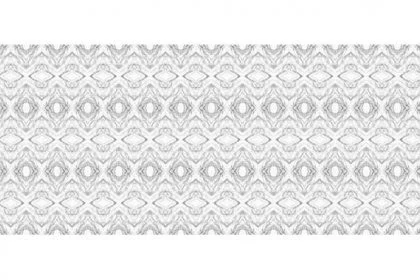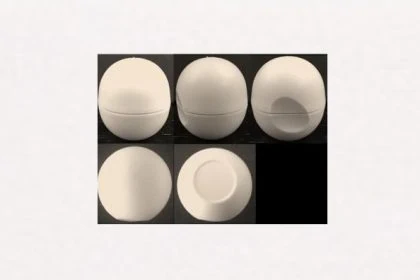A designed ornamental motif was to be protected as an EU trade mark for patterns. But in vain: the design of a trade mark for surfaces must deviate from the industry norm, the CFI ruled. And the more complex the pattern, the less distinctive it is.

Neolith Distribution, SL (Spain), applied for the design of the dispute mark 2019, mainly for floor coverings and porcelain in Nice Class 19. The sign shows an innovatively designed ornamental motif. But the trade mark application was refused by EUIPO for lack of distinctive character (Article 7(1)(b) of Regulation (EC) No 2017/1001).
The Board of Appeal, appealed by Neolith, also refused the trade mark registration. In its reasoning, it classified the disputed mark as a so-called motif mark/pattern mark, for which a use as a decorative surface design is the most likely. Therefore, in order to be distinctive, the shape would have to deviate significantly from the shape expected by the consumer and from the norm or customary in the industry, but that was not the case in the present case.
It was primarily this assessment that Neolith challenged in an action before the European Court (CFI), which ruled on the matter yesterday (12 January 2022, T-259/21). The applicant argued that the sign applied for was a design mark within the meaning of Article 3(3)(e) of the Implementing Regulation (EU) 2018/626, consisting exclusively of a series of elements which are repeated and make it unique and original on the market.
Neolith also relied on comparable authorised EU trade marks. There were many EU trade marks for designs consisting of repeated geometric figures which were considered to be indicative of their trade origin, which were not excluded from registration merely because they did not deviate from what was relatively common in the sector in question.
Trade mark for patterns: motif trade mark under Art. 3(3)(e)
According to Art. 3(3)(e), in the case of a mark consisting exclusively of a series of elements which are regularly repeated, the mark shall be represented by a representation of the repeated pattern. The representation may be accompanied by a description giving details of the regular repetition of the elements.
The applicant emphasised that it was the world’s leading manufacturer of a porcelain product and cited numerous international awards for its innovative design activities in the environmental field and for the original designs from its company. This also applied to the disputed mark; the design applied for as a trade mark was creatively designed and also worthy of protection in view of the great variety of materials, finishes and decorative patterns in the field of cladding.
Creativity is not relevant for distinctiveness
However, the CFI rejected this line of argument. The finding of distinctiveness does not depend on a finding of a certain degree of creativity or linguistic or artistic imagination on the part of the trade mark proprietor, the court explained. Moreover, novelty or originality are not relevant criteria for assessing the distinctiveness of a mark.
Rather, the decisive factor is that the origin of the goods or services covered by the mark must be recognisable and distinguishable from those of other undertakings, it said, citing, inter alia, the 2004 ECJ judgment in SAT.1 v OHIM (C-329/02 P, EU:C:2004:532, paragraph 41).
The applicant could also not rely on Article 3(3)(e) on the issue of distinctiveness, the CFI stated. The fact that the applicant had argued that the requirement for registration of an EU design mark was only the presence of a series of regularly recurring elements could not prevail, as even then the criteria for assessing distinctiveness remained applicable.
Distinctive character of the mark for patterns
However, the trade mark in dispute was applied for to protect goods consisting of coating materials. The trade mark in dispute was thus intended to be applied to the surface of these goods, the CFI stated. In such a case of a trade mark for patterns, the case-law for 3D trade marks applies, according to which only a trade mark which deviates significantly from the business norm can demonstrate distinctive character.
Indeed, the case law for three-dimensional marks consisting of the appearance of the product itself applies by analogy to marks consisting of the two-dimensional representation of the product, and likewise where the mark applied for is a sign consisting of a pattern applied to the surface of a product (2018, Birkenstock Sales v EUIPO, C-26/17 P, EU:C:2018:714).
The CFI pointed out that the complexity of the design was also a relevant element, as it prevented particular details of the design from sticking in the mind and being easily and immediately remembered as a distinctive sign by the relevant public. Therefore, the more complex the mark is in terms of surfaces, the less distinctive it is.
The Board of Appeal therefore did not err in finding, the Court summarised, that the disputed mark was perceived as purely decorative and did not contain a message capable of helping consumers to easily memorise the sign.
Nor did the court agree with Neolith’s reference to other comparable EU trade marks. Rather, as usual, the CFI emphasised that the decisions of the European Courts are not to be based on previous decisions of the EUIPO, but on the relevant regulations. In addition, however, the Board of Appeal had explained that the Neolith case was different from the other “comparable” EU trade marks. And, moreover, it rejected the disputed mark not only because it was not different enough from the business norm, but because the sign would be perceived as a purely decorative element, given its complexity and the diffuse nature of its lines.
The CFI therefore dismissed Neolith’s action in its entirety.
Would you also like to protect or defend a design?
Our lawyers have many years of expertise in design law and trade mark law as well as in the entire field of intellectual property and are entitled to represent you before any court – in Germany and also internationally.

Sources:
Image: from the file of the judgment







Leave a Reply